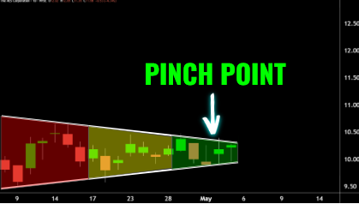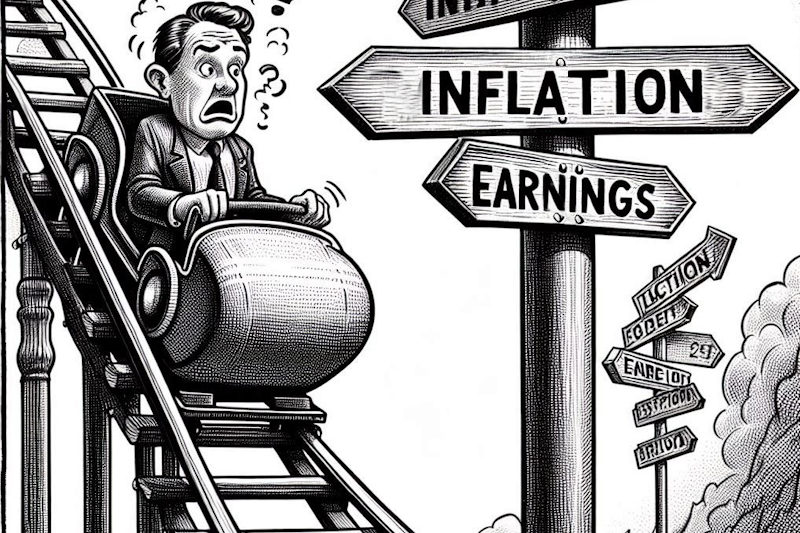Broadcom (AVGO) reports earnings after the close today, and I’ve set up a broken wing butterfly trade designed to capitalize on one of my favorite setups — a narrow earnings drift.
Most of the time, AVGO’s earnings moves come in under 10%. We’re usually looking at a range of 2% to 6%, and rarely do we see anything more extreme.
That gives me room to structure a risk-defined trade that can benefit from a modest pop, then fade — something AVGO has done in prior earnings cycles.
I’m going for a pin around $285. That’s where I’d like to see the stock settle post-earnings. I built my structure to allow for a move up to that level, but not much higher.
The idea is that if we do get the initial earnings bump, it stalls right around my pin zone and I can capture profit as the stock drifts back or sits still.
The setup also gives me a decent profit range even if the move comes in lighter than expected. Based on where AVGO was trading — around $260 — I went out to sell the 280 and 285 strikes. That gives me room for up to about a 9% move before I’d be exposed to real risk.
It’s not a guaranteed fill — this trade was still pending when I last checked — but it’s exactly the kind of low-risk, high-conviction idea I look for during earnings. If I get filled and the move stays within expectations, the profit trap is set.
Earnings Moves Are All About Probabilities
The key with these setups is understanding the expected move and matching that to historical behavior. For AVGO, if I’m positioning for a drift rather than a breakout, I need to structure wide enough to accommodate a typical earnings reaction but not so wide that I sacrifice profit potential.
I’ve got no interest in trading the extremes here. I’m not betting on a breakout or collapse. I’m betting on the same kind of muted reaction we usually see — ideally just enough to tag my pin, then fade back into range.
If it works, the payoff is solid with limited risk. If it doesn’t fill, fine — there’s always another trade. But this kind of setup is where I want to be during earnings season, especially on names like AVGO that tend to behave predictably.
The broken wing butterfly gives me a nice asymmetric return potential, and I can stomach up to a 10% move without blowing through my structure. That’s the kind of balance I want — precision without being too cute.
I’ll see you in the markets.
Chris Pulver
Chris Pulver Trading
Editor’s Note: How to Place a Broken Wing Butterfly
Step 1: Understand the Structure
A broken wing butterfly is a variation of the standard butterfly that moves one of the wings farther out to reduce cost or create a credit. It introduces a directional bias.
For a call broken wing butterfly using AVGO as an example:
- Buy 1 call at $260
- Sell 2 calls at $280
- Buy 1 call at $285
This creates a bullish setup. Your goal is for the stock to pin near the short strike ($280) without running too far beyond the upper strike ($285).
Step 2: Choose the Underlying and Expiration
Select a stock with a predictable earnings pattern or defined trading range. Use an expiration that matches your outlook — usually 1 to 3 weeks out. For earnings trades, position it to expire after the event but not too far out.
Step 3: Pick Your Strikes
Use the expected move to structure the trade:
- The lower long strike sets the bullish entry point
- The middle short strike defines your ideal pin target
- The upper long strike is farther away to create the “broken” wing and reduce cost
The wider the distance between the upper long and the middle short strike, the lower the cost — or even a small credit.
Step 4: Place the Order
On your broker’s platform:
- Open the options chain and select your expiration
- Choose the three strikes you want
- Enter the trade as a multi-leg order: Buy 1 / Sell 2 / Buy 1
- Set a limit price for your debit or credit
- Review the max risk and reward before submitting
Step 5: Manage the Trade
You want the stock to close near the short strike for max profit. You can close the trade early to avoid expiration risk. If price moves too far past the long wing, be aware of your defined loss.
This setup offers a good risk-reward profile with a directional edge — and a high probability of success when timed around expected drift or muted earnings reactions.
Follow along and join the conversation for real-time analysis, trade ideas, market insights and more!
- Telegram:https://t.me/+av20QmeKC5VjOTc5
- YouTube:https://www.youtube.com/@FinancialWars
- Twitter:https://x.com/realchrispulver
- Facebook: https://facebook.com/therealchrispulver
Important Note: No one from the ProsperityPub team or Chris Pulver Trading will ever contact you directly on Telegram.
*This is for informational and educational purposes only. There is inherent risk in trading, so trade at your own risk.
P.S. The Pattern That Shows Up Before Explosive Moves
Fundamentals tell one story…
Price action tells the truth —but most traders read it too late. And that’s where the “PinchPoint” comes in.

It’s a simple pattern that shows pressure building before a breakout.



